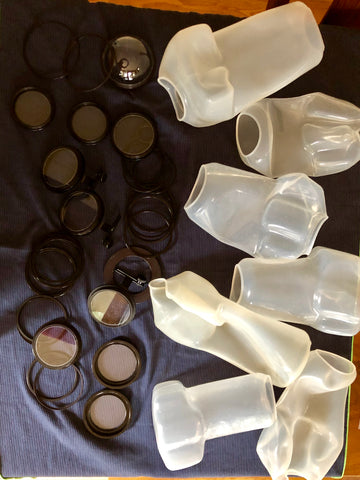Maintenance & Care for Your Outex Underwater Housing System
Mar 26, 2019
Recommended Topics: Clean, Dry, & Store
Your Outex waterproof housing is built to last — made from premium materials like aluminum, stainless steel, optical glass, nylon, neoprene, and our patented silicone-based cover. With proper care, your Outex system will protect your camera gear for years of adventures — from oceans to deserts, rainforests to snowfields.
Just like your camera equipment, your Outex housing deserves a little maintenance to stay in peak condition. Follow these 3 simple steps to keep your system performing perfectly:
1. Clean
After each use, rinse all Outex components with clean, fresh water and mild, neutral soap — the same care you’d give your own skin.
-
Use a soft toothbrush to remove sand, dirt, or debris from metal parts and threads.
-
Avoid harsh chemicals, solvents, or acidic cleaners that can damage the materials.
-
If you’ve used your housing in salt water, cleaning promptly is especially important to prevent corrosion or buildup.
Pro Tip: Pay special attention to the threading areas and ports — clean threads make assembly smoother and help maintain your system’s integrity.
2. Dry
After cleaning, gently pat all components dry with a soft towel or cloth. Then allow them to air dry completely before reassembling or storing.
-
Avoid storing the housing while wet or fully assembled.
-
Let parts “breathe” — moisture trapped inside can create condensation or mold.
-
Don’t fold or tightly compress the cover; instead, store it loosely to avoid fold marks.
Pro Tip: If you’re on the go, let the components dry overnight before packing them for travel or long-term storage.

3. Store
Once clean and dry, store your Outex gear in a cool, dry, and well-ventilated space — the same way you’d store your camera gear.
-
Avoid sealed plastic bags or humid environments.
-
Protect the cover and ports from sharp objects or hard surfaces.
-
Use Outex protective cases to safeguard your housing during transport or storage.
We offer a range of protective cases on our Parts page — including port covers, neoprene carrying cases, and padded mats for assembly or travel.

Handling & Protection Tips
The Outex cover is tough, flexible, and designed for adventure — but like any gear, it has limits.
-
Avoid dragging or pressing the cover against sharp edges like your camera’s hot-shoe mount or metal strap loops.
-
When transporting your gear, use a protective case to prevent hard impacts (for example, from kayak floors, paddles, or other equipment).
-
Even small punctures or micro-tears from repeated impacts can eventually allow water in when submerged — prevention is key.
Additional Care, when/if needed: Lubrication
All Outex threaded parts come pre-lubricated from the factory using high-quality silicone oil. This lubrication helps ensure smooth threading — it does not affect the waterproof seal.
Reapply lubricant only when:
-
Threads feel gritty, sticky, or hard to turn.
-
You’ve cleaned the system after heavy use in sand, salt, or dirt.
To re-lubricate:
-
Apply a few drops of Outex silicone oil (available on our Parts page).
-
Spread evenly using a clean brush, Q-tip, or cloth along the circumference of the threads.
-
Wipe off any excess oil before reassembly.
Summary
Proper maintenance keeps your Outex system adventure-ready and your camera gear safe.
Remember: Clean. Dry. Store.
By taking just a few minutes after each use, you’ll extend the life of your Outex waterproof housing — and keep capturing stunning images in any environment.



